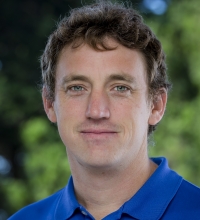To address climate change in California beyond carbon-based gases, the state has recently passed legislation to reduce short-lived climate pollutants. In particular, the state aims for a 40% methane reduction by 2030. Several reductions may come through existing technologies associated with landfills and energy producers. However, the state’s largest contributor to methane production is cattle, specifically 1.4 million resident dairy cows and 1 million beef cattle.
Methods to reduce gases produced by cattle have largely been unexplored in California. However, recent research in Australia has shown that some species of sub-tropical seaweed can reduce methane production from cattle by up to 99% when used as a feed additive at 2% inclusion rates of organic matter. Temperate species of seaweed have not yet been assessed for methane-reducing properties, but many of the species present in the California Current Ecosystem are closely related to these sub-tropical species.
The research team selected 28 seaweed species from across the three major groups of algae (red, brown and green seaweeds), some of which are already farmed in California, and some of which could potentially be grown here. The species were cultured at Moss Landing Marine Labs.
To assess their effectiveness, the team first conducted initial “in vitro” digestion studies in collaboration with the USDA’s Oklahoma and Central Plains Agricultural Research Center. In a test tube, the USDA scientists mixed stomach fluids, pulled directly from a cow, with the kinds of grasses cows are likely to forage, plus a small amount of seaweed — which made up about 2% of the contents of the feed in the experimental recipe. Then the scientists heated the mixture to the same temperatures as an actual cow stomach and tracked what gases were produced. As a control, Gardner and his team included Asparagopsis taxiformis, the species previously shown to produce methane emissions.
Consistent with previous studies, the project team found Asparagopsis reduced methane production on the order of 80%. They also found that two species of the genus Gracilaria had some promise — though they only produced reductions of between 10 and 20 percent. Low amounts of production, though, limited the scope of the “in vivo” trials conducted at the USDA Dairy Forage Research Center in Madison, Wisconsin. Only a small amount of Gracilaria could be fed to the cows, and the resulting emissions reductions were not significant.
Scientists have theorized that what makes Asparagopsis so effective are high amounts of bromoform, an organic compound found in most seaweeds and phytoplankton that is thought to provide defense against damage from microbes and sunlight. So the research team grew Gracilaria in varied conditions to see if they could increase its bromoform content. The results showed that the amount of bromoform in seaweed is highly dependent on light exposure: At peak sunlight, the bromoform in the seaweed is as much as two to three times higher than in the morning. He also found that if the seaweed was exposed to the air for short periods, a process known as desiccation, that also increased bromoform concentrations. These results are likely to be transferable to other seaweed species, and so can be applied by farmers in California and beyond.
 Luke Gardner
Luke Gardner